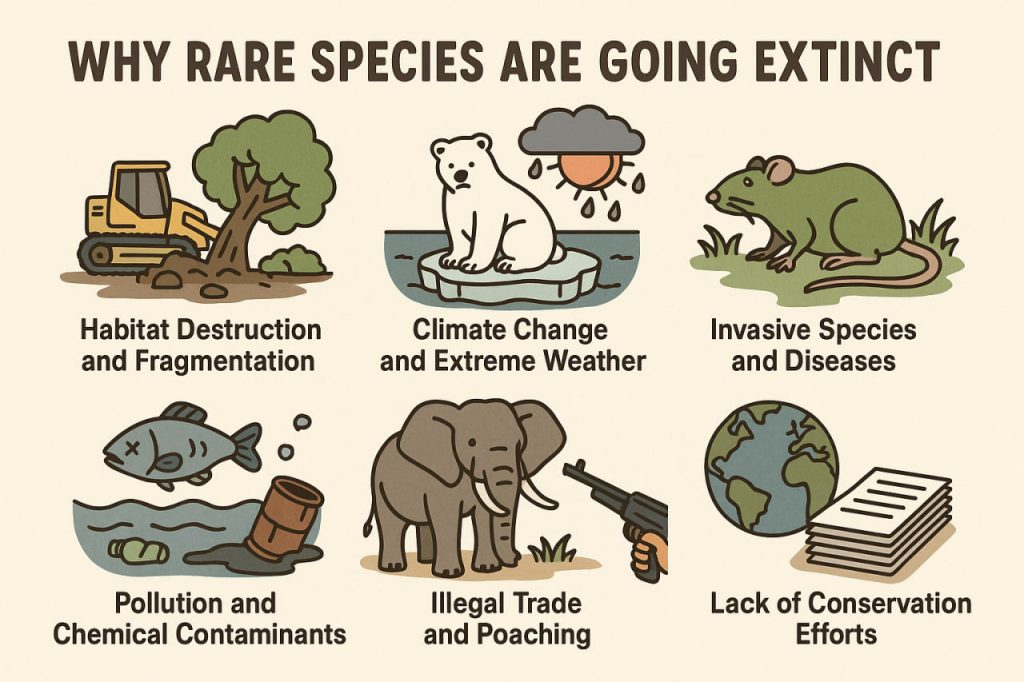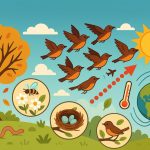The extinction of rare species is a critical issue that threatens the balance of ecosystems and the biodiversity of our planet. Although extinction is a natural part of evolution, the current rate—driven largely by human activity—is alarmingly high. Understanding the reasons behind the loss of these species is key to protecting life on Earth and preserving ecological stability for future generations.
Habitat Destruction and Fragmentation
One of the primary drivers of species extinction is the destruction of habitats. Forests are cleared for agriculture, wetlands are drained for development, and coral reefs are damaged by pollution and rising ocean temperatures. This leads to habitat fragmentation, where populations are split into smaller, isolated groups. These fragmented habitats support fewer individuals, reducing genetic diversity and increasing the risk of local extinction.
In particular, species that depend on very specific conditions—such as certain soil types, climates, or food sources—are more vulnerable. When their environment is altered or destroyed, they often cannot adapt or relocate quickly enough to survive.
Climate Change and Extreme Weather
Climate change is altering ecosystems across the globe. Rising temperatures, changing rainfall patterns, and increased frequency of extreme weather events (such as droughts, hurricanes, and wildfires) make survival more difficult for rare species. Many animals and plants are highly sensitive to climate variations and cannot migrate or evolve rapidly to keep pace with shifting conditions.
Mountain species, for example, often have nowhere to go as temperatures rise—their habitats simply shrink until they vanish. Similarly, coral species suffer from bleaching events when ocean waters become too warm, leading to mass die-offs.
Invasive Species and Diseases
The introduction of invasive species into new environments can be devastating for local wildlife. These newcomers often outcompete native species for resources or introduce pathogens against which native organisms have no defense. In many cases, rare species are already weakened by other stressors and cannot survive additional pressure.
For example, invasive predators like rats or cats brought to isolated islands have caused the extinction of many native bird and reptile species. Meanwhile, diseases such as chytridiomycosis in amphibians or white-nose syndrome in bats have pushed already rare species to the brink.
Pollution and Chemical Contaminants
Pollution is another major threat. Pesticides, heavy metals, plastics, and industrial waste contaminate soil, water, and air, affecting the health of both plant and animal life. For rare species, even low levels of toxins can cause reproductive failure, developmental problems, or death.
Aquatic organisms are particularly vulnerable. Small fish, amphibians, and freshwater invertebrates often live in restricted environments like ponds or streams, where pollutants quickly accumulate to dangerous levels.
Illegal Trade and Poaching
Wildlife trafficking and poaching continue to decimate populations of rare animals and plants. High market demand for exotic pets, traditional medicine, rare woods, and luxury products like ivory encourages illegal harvesting.
Because rare species are, by definition, already limited in number, even small-scale exploitation can have outsized impacts. This is especially true for slow-breeding animals like rhinos, elephants, and certain birds of prey.
Lack of Conservation Efforts
Many rare species go extinct simply because no one notices in time. Lack of funding, poor enforcement of protective laws, and limited scientific research mean that some species disappear before we even fully understand their role in the ecosystem.
Without coordinated international action and local conservation programs, these losses will continue. Effective protection requires habitat preservation, legal regulation, public education, and long-term monitoring of vulnerable populations.
Conclusion: The Need for Urgent Action
The extinction of rare species is not an isolated tragedy—it is a warning sign of broader environmental collapse. Each species plays a role in its ecosystem, and the loss of even one can set off a chain reaction. Protecting rare species requires not only conservation efforts but also a fundamental shift in how we interact with the natural world. Only by addressing the root causes—habitat destruction, climate change, pollution, and exploitation—can we hope to preserve Earth’s rich biological legacy.
Glossary
- Rare species — organisms with small population sizes or limited geographic ranges, making them especially vulnerable to extinction.
- Habitat fragmentation — the breaking up of large habitats into smaller, isolated patches.
- Climate change — long-term shifts in temperature and weather patterns due to human activity.
- Extreme weather events — intense or unusual weather conditions such as floods, droughts, and storms.
- Invasive species — non-native organisms that disrupt local ecosystems.
- Pathogens — disease-causing microorganisms such as viruses, bacteria, and fungi.
- Pollution — the presence of harmful substances in the environment.
- Wildlife trafficking — illegal trade in wild animals and plants.
- Poaching — illegal hunting or harvesting of wildlife.


